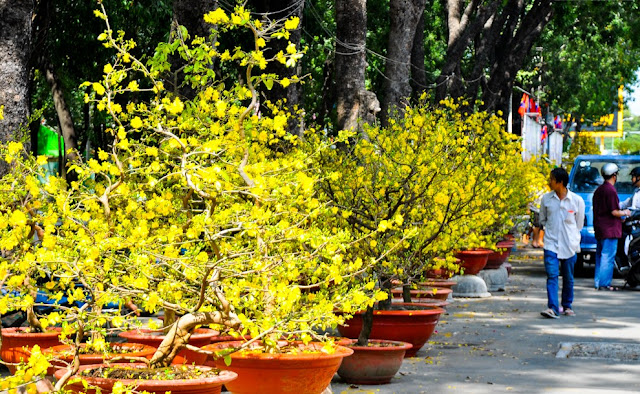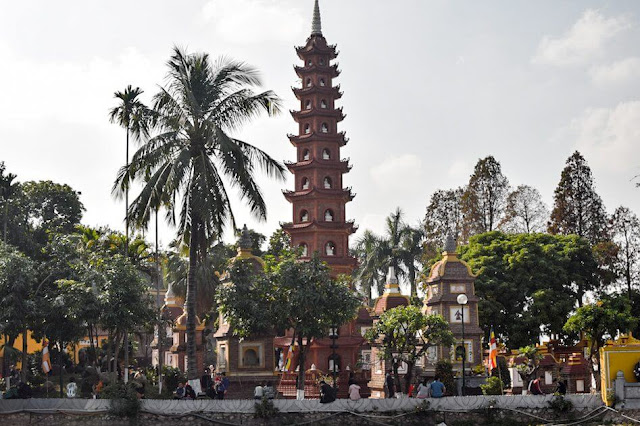If summer is “the time for holiday” to most people, Tet in Vietnam is just like another “party time” when people eventually find themselves good places to make a getaway. Now follow us to discover your own Tet in the capital.
Explore Ngoc Son Temple
At Hoan Kiem Lake, you can find Ha Noi’s most visited temple Ngoc Son temple, meaning “Temple of the Jade Mountain”. Ngoc Son Temple was built in the 18th century in commemoration for General Tran Hung Dao, scholar Van Xuong and Confucian master Nguyen Van Sieu. It is located on a small island on the lake, and is connected to the shore by the iconic Rising Sun Bridge. The bridge is often lit at night. Also, the pagoda has two towering posts decorated with Chinese writing.Walk around Hoan Kiem Lake
Hoan Kiem Lake is a popular place for a weekend hang out, especially at Tet. Annually, there will be big flower festival around the lake at Lunar New Year. There is also Tet Flower Market in Hang Luoc Street if you want to enjoy the beauty of peach blossoms or buy some to bring to your hometown. Tet in Ha Noi always bring home to mind, especially to Hanoians, this is the time when they can truly return to their childhood. Hoan Kiem Lake’s Flower Festival will not be a bad choice if you want to find the breath of Tet around the capital.Visit Tran Quoc Pagoda
The Tran Quoc Pagoda is a Buddhist center located on the East side of the West Lake. It has a history of more than 1500 years. Although it is definitely worth a visit, it is crowded there during Tet. It was busier at Tran Quoc Pagoda than at Ngoc Son Temple. A lot of local people went to say their prayers, which creates a walking line to get in. If you are interested in seeing the praying, it is definitely worth a visit. However, if you are a bit claustrophobic, go early and avoid the crowds.Visit Ho Chi Minh Mausoleum
Started in 1973, the construction of the mausoleum was modeled on Lenin's mausoleum in Russia and was first open to the public in 1975. The granite building meant a great deal for many locals as it ensures that their beloved leader ‘lives on forever’.Security is tight and visitors should dress with respect (no shorts, sleeveless shirts and miniskirts) and everyone has to deposit their bags and cameras before getting in. Visitors are not allowed to stop and hold the constant queue up as the place is constantly busy. Uncle Ho’s remains are sent yearly to Russia for maintenance therefore the mausoleum is closed usually from October onwards. It’s best to recheck with your hotel tour desk before visiting. Admission is free but donations are accepted.
Enjoy street food
It is one of the things Ha Noi is known for awesome street food. A good way to spot a good street food restaurant is if you see a lot of (local) people eating there. Simple as that. Also, if a lot of people are sitting there, you can also sneak peak how the food looks like.During Tet there are still enough street food vendors open, although less than normally. However, this really was not a problem, because there were enough options.
See more: Discover Ha Noi through its famous structures
Source Chaptertravel



















































